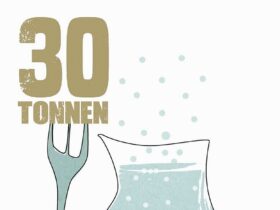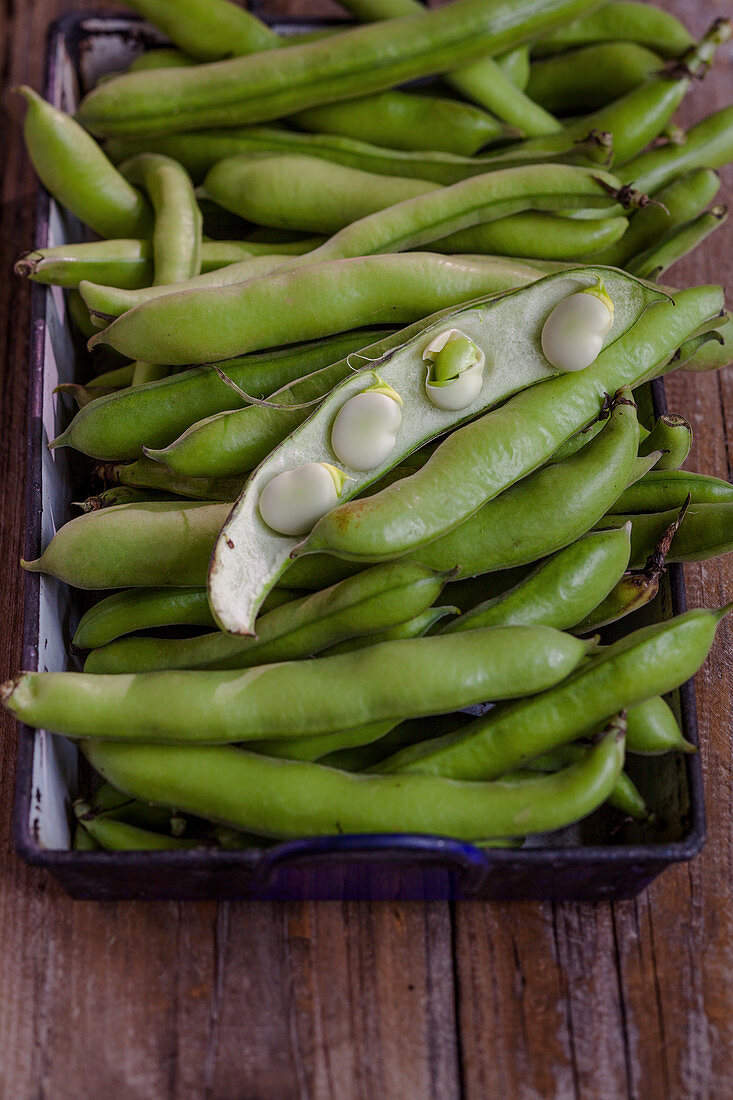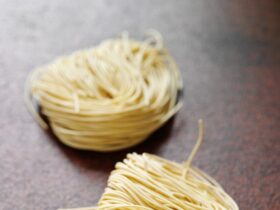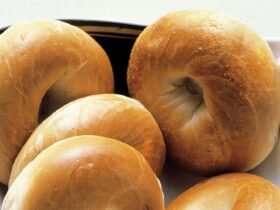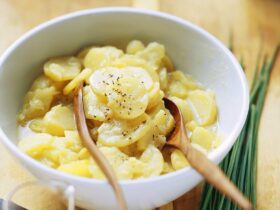Fava beans, also known as broad beans, are a staple in many cuisines and are celebrated for their versatility in the kitchen. They’re rich in protein, with a 100-gram serving offering about 13 grams, making them an excellent choice for those looking to boost their protein intake. Additionally, fava beans are a good source of dietary fibre, which is essential for digestive health.
Beyond their macronutrient content, fava beans are packed with vital micronutrients. They contain significant amounts of copper, which is crucial for maintaining healthy blood vessels, nerves, immune systems, and bones. Fava beans also provide vitamins A and C, potassium, and magnesium, contributing to a well-rounded nutritional profile.
Fava beans can be enjoyed in a multitude of dishes, from fresh salads and hearty soups to flavorful dips and robust main courses. Their adaptability makes them a valuable ingredient for those looking to diversify their culinary repertoire.
Nutritional Benefits of Fava Beans
Fava beans, also known as broad beans, are celebrated for their rich nutritional profile, offering a host of health benefits. High in protein and fibre, these beans are an excellent choice for those looking to support heart health, manage cholesterol, and regulate blood sugar levels. Their nutrient density also makes them a valuable component for weight management and overall wellness.
Incorporating fava beans into a balanced diet amplifies their benefits. While they are a powerhouse on their own, it’s essential to consume a variety of nutrient-dense foods to maintain overall health. Here’s a snapshot of their nutritional value per 100g serving:
| Nutrient | Amount |
|---|---|
| Protein | 7.6g |
| Dietary Fiber | 5.4g |
| Total Fat | 0.4g |
| Carbohydrates | 19.6g |
| Iron | 1.5mg |
| Vitamin C | 1.4mg |
Fresh fava beans can be a tasty addition to a variety of dishes, from salads and soups to dips and main courses, enhancing both the flavour and nutritional content of your meals.
Preparation Tips for Fava Beans
Preparing fava beans properly is essential for unlocking their full flavour and nutritional potential. Start by selecting fresh beans that are firm and bright green. Shell the beans by snapping off the end and pulling the string to release the beans inside.
Once shelled, blanch the beans to make peeling easier. Blanch the Beans by bringing a pot of water to a boil and adding the beans. For a firmer texture, blanch for a quick 60 seconds; for more tender beans, extend the time to 3-5 minutes. After blanching, immediately immerse them in an ice bath to stop the cooking process.
Finally, cook the beans according to your recipe, and store any leftovers in an airtight container in the refrigerator. Fava beans can also be blanched and frozen for long-term storage, ensuring you have these nutritious legumes available year-round.
Top Substitutes for Fava Beans
Borlotti Beans: A Direct Substitute
Borlotti beans, also known as cranberry beans, are a staple in Italian cuisine and are cherished for their creamy texture and nutty flavour. They are an excellent source of protein, fibre, and essential vitamins and minerals, making them a nutritious addition to any meal.
When borlotti beans are not available, pinto beans serve as the ideal alternative. Their nutritional profile and flavour closely match that of borlotti beans, ensuring a seamless transition in recipes. Here’s a simple conversion to keep in mind:
| Borlotti Beans | Pinto Beans |
|---|---|
| 1 cup | 1 cup |
Other substitutes that can be used in equal measure include kidney beans, great northern beans, navy beans, and butter beans. Each of these alternatives can enrich your dishes with similar health benefits.
Cannellini Beans: The White Kidney Alternative
Cannellini beans, also known as white kidney beans, are a superb substitute for fava beans, offering a similar size and texture. Their mild, nutty flavour makes them a versatile ingredient in a variety of dishes, from stews to salads.
When replacing fava beans with cannellini beans, use them in a one-to-one ratio. This ensures that the consistency and volume of your dish remain unchanged. Cannellini beans are not only a flavorful alternative but also a nutritious one, being rich in protein, fibre, and essential vitamins and minerals.
Here’s a quick comparison of bean substitutions:
- 1 cup of borlotti beans = 1 cup of cannellini beans
- 1 cup of pinto beans = 1 cup of cannellini beans
- 1 cup of kidney beans = 1 cup of cannellini beans
These substitutions are not only easy to remember but also practical for everyday cooking, ensuring a smooth transition in your recipes.
Other Legume Alternatives
When borlotti beans are out of reach, a plethora of other legumes stand ready to take their place in your culinary creations. Chickpeas, for instance, are not only a nutritional powerhouse but also bring a unique texture and flavour to dishes that is distinct from fava beans. With their high protein, fibre, and essential nutrient content, they make an excellent addition to any meal.
Another fantastic option is butter beans, also known as lima beans. Their creamy texture and mild flavour make them a versatile substitute, especially in recipes that require a richer, more velvety consistency. They can be used interchangeably with borlotti beans in a 1:1 ratio, making them an easy swap in your favourite recipes.
These legumes can be mashed for spreads or dips, and their availability and affordability make them a practical choice for everyday cooking.
Here’s a quick guide to substituting borlotti beans with other legumes:
- Pinto Beans: 1 cup borlotti = 1 cup pinto
- Kidney Beans: 1 cup borlotti = 1 cup kidney
- Great Northern Beans: 1 cup borlotti = 1 cup great northern
- Navy Beans: 1 cup borlotti = 1 cup navy
- Chickpeas: 1 cup borlotti = 1 cup chickpeas
- Butter Beans (Lima Beans): 1 cup borlotti = 1 cup butter beans
Frozen peas can also serve as a more than worthy substitute for fava beans, especially in dishes like the minted fava beans with mashed potatoes, where their sweetness and texture complement the other ingredients beautifully.
Incorporating Fava Bean Substitutes into Your Diet
Adapting Recipes for Bean Substitutes
When fava beans are unavailable, adapting recipes to include alternative beans is straightforward. The key is to match the texture and flavour profile of fava beans with a suitable substitute. For instance, pinto beans can be used in a 1:1 ratio as they share a similar creamy texture and slightly nutty flavour, making them perfect for stews and salads.
- Pinto Beans: 1 cup fava beans = 1 cup pinto beans
- Kidney Beans: 1 cup fava beans = 1 cup kidney beans
- Chickpeas: 1 cup fava beans = 1 cup chickpeas
These substitutes not only mimic the characteristics of fava beans but also offer comparable nutritional benefits. When using these alternatives, consider the cooking time as it may vary slightly from that of fava beans.
Maintaining Nutritional Integrity with Alternatives
When substituting fava beans, it’s crucial to consider the nutritional profile of the alternatives to ensure you’re not missing out on essential nutrients. Beans and legumes are powerhouses of plant-based protein, fibre, and various vitamins and minerals.
To maintain nutritional integrity, compare the protein and fibre content, as well as the vitamin and mineral composition of the substitutes. Here’s a simple guide to help you choose:
- Protein Content: Look for alternatives that offer a similar amount of protein per serving.
- Fibre Content: Ensure the substitute has comparable fibre levels to support digestive health.
- Vitamins and Minerals: Check for key nutrients such as iron, potassium, and folate.
Creative Cooking with Bean Varieties
Exploring the culinary world of beans opens up a spectrum of flavours and textures that can invigorate your cooking repertoire. Embracing the versatility of bean substitutes not only allows for dietary variety but also introduces new dimensions to classic dishes. For instance, incorporating Cannellini beans into a traditional Rajma (Kidney Bean Curry) can offer a creamier consistency and a milder taste, making the dish more palatable for those who prefer subtler flavours.
When adapting recipes, consider the cooking times and liquid absorption rates of different beans. A handy reference table can guide you through these adjustments:
| Bean Type | Cooking Time | Liquid Absorption |
|---|---|---|
| Fava Beans | 40-45 min | High |
| Borlotti Beans | 45-50 min | Medium-High |
| Cannellini Beans | 30-35 min | Medium |
| Chickpeas | 50-60 min | Medium-Low |
Navigating the World of Beans: A Comprehensive Guide
Comparing Bean Varieties
When exploring the world of beans, it’s essential to understand how different varieties compare to fava beans, especially when looking for substitutes. Borlotti beans, often recommended as a direct replacement, share a similar texture and taste to fava beans, making them a seamless substitute in most recipes.
Butter beans, also known as lima beans, offer a mild flavour and creamy texture, suitable for dishes requiring a richer consistency. They are a nutritious choice, rich in protein, fibre, and essential minerals like folate and potassium.
Chickpeas and kidney beans also serve as viable substitutes, though they differ slightly in size and cooking time. Adjustments may be necessary when using these alternatives to ensure the desired outcome in your dishes.
Choosing the Right Substitute for Your Dish
Selecting the ideal substitute for fava beans in your dishes hinges on understanding the unique flavour and texture profile of fava beans. Fava beans have a buttery and nutty taste, which should be matched by the chosen alternative to maintain the integrity of your dish. When considering substitutes, it’s important to factor in how the beans will interact with other ingredients and the cooking method involved.
For a direct swap, you can use the same measurement of the substitute as you would with fava beans. For example, 1 cup of fava beans can be replaced with 1 cup of pinto beans or kidney beans, both of which offer a similar texture and flavor profile. Here’s a quick reference for substitution ratios:
- Pinto Beans: 1 cup equals 1 cup of fava beans
- Kidney Beans: 1 cup equals 1 cup of fava beans
- Cannellini Beans: 1 cup equals 1 cup of fava beans
Remember, the goal is to find a bean that complements the other flavours in your dish while also providing a similar mouthfeel and nutritional value as fava beans.
Conclusion
In conclusion, fava beans are a fantastic choice for those looking to diversify their culinary repertoire with a nutritious and versatile legume. Whether you’re substituting borlotti beans or simply seeking to add more plant-based protein to your diet, fava beans offer a wealth of nutritional benefits, including high levels of protein, fibre, iron, vitamins A and C, potassium, and magnesium.
Their adaptability in the kitchen means they can be transformed into a myriad of dishes, from salads and dips to soups and stews. Remember to shell them before use, and don’t hesitate to experiment with the various cooking methods to best incorporate their rich flavour and healthful properties into your meals.

